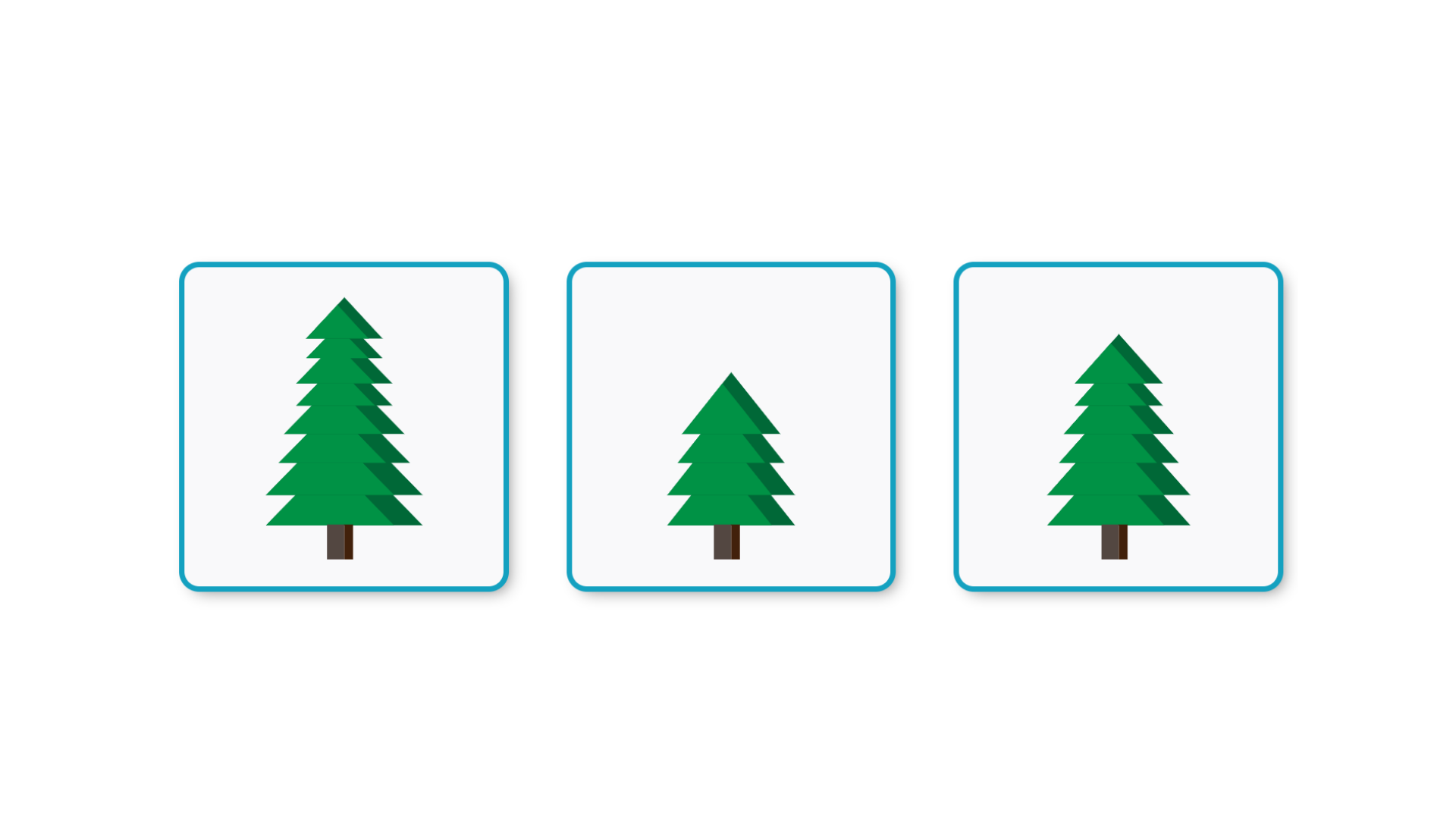Tips on how to use this exercise at home and at school.
Early math concepts
In this exercise, the child compares three objects, events or activities and expresses their mutual relationship. This already places higher demands on the child's cognitive and expressive skills.
The child passively and actively grades adjectives and adverbs. He/she determines a higher or lower degree of a given property, i.e. that something is more/something is less, and assigns, for example, terms such as neither the smallest/nor the largest to given objects. Thus, the child actively compares objects with each other.

Why is this exercise important?
Comparing, for example, objects, events and activities makes the child realise what is the same and what is not. (Example: Which string is neither the longest nor the shortest?) Such thinking leads to qualitative perception, which will one day lead to comparing numbers and numbers in general. In addition to cognitive skills, the use of language is actively engaged both passively and actively.
Who is this exercise suitable for?
Generally belongs in preschool or early school play. In addition to the concepts of reasoning, it also develops language skills at the same time.
Methodological recommendations
Either read aloud the instructions to the child, play them from the app or let the child read them by themselves.
The child is presented with three pictures and uses the instruction to determine the quality of one picture. However, the child must compare them all with each other. Example: click on the house that is neither the smallest nor the largest. The child should know that the house he is looking for will not be the same as the smallest or the largest house. How are the other houses different?
In terms of vocabulary, by grading adjectives and adverbs, the child intensively links reasoning and language skills and reinforces concepts. Ideally, the child has the opportunity to verbally explain his reasoning.
Tips for similar activities outside the app
We encounter these situations all the time. An example would be comparing everyday objects: this mug is big and this one is even bigger, but this one is the biggest of all. This mug is neither the biggest nor the smallest. What does that mean?
We can use different situations to expand a child's vocabulary. You can find ideas for words to use in this exercise.